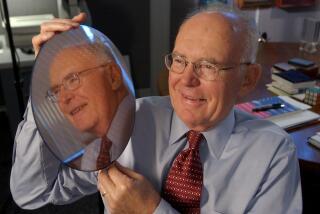New Trial Ordered in Chip Feud : Technology: Judge’s ruling opens the way for Advanced Micro Devices to market a clone of Intel’s 486 computer chip in the interim.
- Share via
SAN FRANCISCO — Opening the way for Advanced Micro Devices to challenge Intel Corp. in the red-hot market for 486 personal computer chips, a U.S. District Court judge on Friday set aside a jury finding that AMD had violated Intel copyrights and ordered a new trial.
The ruling makes it possible for AMD to begin immediate production of a clone of Intel’s 486 computer chip, rather then spending months completing a 486 clone that doesn’t use Intel’s copyrighted microcode software.
Shipping a 486 with Intel microcode would still carry substantial legal risks for AMD, and the company said Friday it hadn’t decided whether to do so. But most analysts expect AMD to announce Monday that it will take its chances and launch a 486.
The 486 over the past year has displaced the earlier generation 386 as the standard for desktop personal computers, producing enormous profits for Intel. AMD’s entry into the market will eventually lead to price competition and cheaper 486 PCs, though analysts say that limited supplies will likely keep 486 chip prices stable until sometime next year.
The news came after stock markets had closed Friday. Intel shares closed at $110, down $1.625. But in trading on the Instinet brokerage system, an electronic network through which brokers and money manag ers can trade blocks of stock after hours, Intel shares were down to $102.
Friday’s ruling by U.S. District Judge William A. Ingram came in a copyright infringement lawsuit involving a chip known as the 287. Intel had charged that AMD was illegally using a microcode that belonged to Intel.
AMD did not deny using the microcode, but claimed it had the right to do so under a 1976 licensing agreement with Intel. AMD also used the microcode in its clone of Intel’s 386, and had planned to use it in the 486 as well until a jury ruled in Intel’s favor last year. AMD’s use of the microcode in the 386 was protected by a decision in a separate but related lawsuit.
Ingram’s latest ruling, filed on Thursday but apparently not given to the two companies until late Friday, granted AMD a new trial on the grounds that Intel had withheld evidence relevant to AMD’s defense.
AMD Chairman W. J. (Jerry) Sanders, using the kind of rhetoric that has become common on both sides of this long and bitter legal war, said Intel had reaped “unconscionable profits . . . on an unfairly maintained monopoly.” He promised that AMD would “compete vigorously in the microprocessor industry, to the benefit of all participants in the computer industry, save one.”
Intel general counsel F. Thomas Dunlap said he is confident of victory in the new trial: “It will cost us a bunch of legal fees, but we won it once and we’ll win it again.”
Analysts said AMD would likely proceed with a long-since-completed 486 clone that uses the Intel microcode. When it completes its own microcode sometime this summer, it will then launch a new product and phase out the earlier one to protect itself from a possible adverse outcome in the new trial.
Mel Phelps, an analyst with Hambrecht & Quist, said that AMD wouldn’t be taking too big a risk with such a strategy, since the most it would stand to lose would be profits on 486s that used the Intel microcode--profits it wouldn’t have anyway if it didn’t go ahead.






